Content Library | Next Generation Missiles and Hypersonics Summit
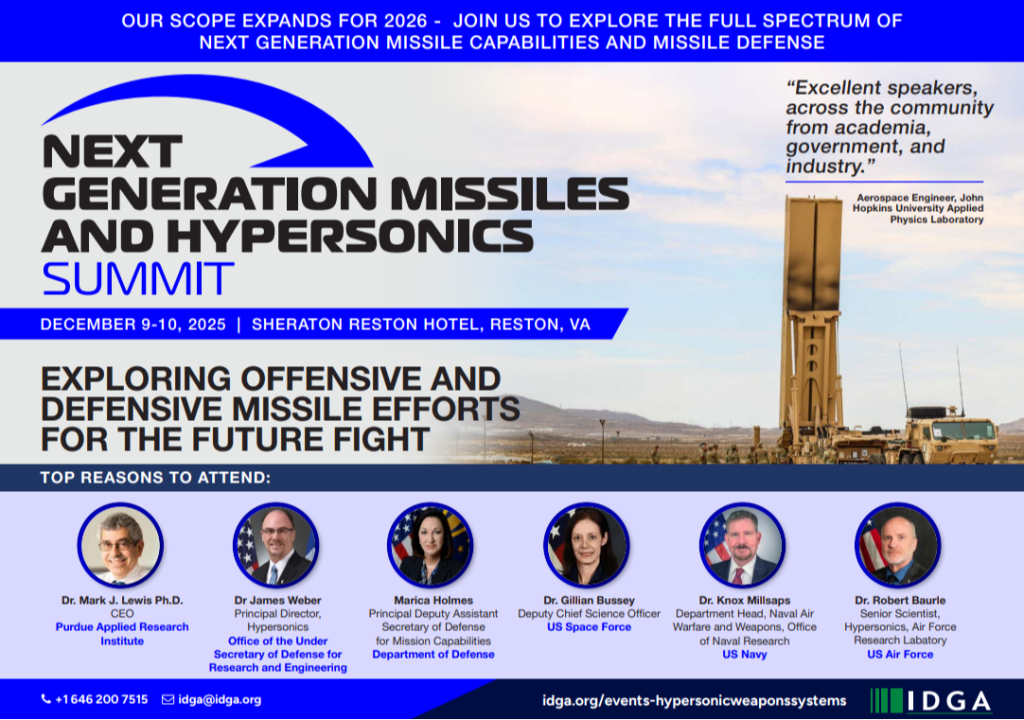
Next Generation Missiles and Hypersonics Summit | View the 2025 Agenda
The 6th Annual Next Generation Missiles and Hypersonics Summit Returns in 2025! Join us December 9-10, 2025, at the Sheraton Reston Hotel in Reston, VA, for this premier defense and technology event. This year’s Summit brings together senior leaders from the Department of Defense, i ...
2025 Event Information
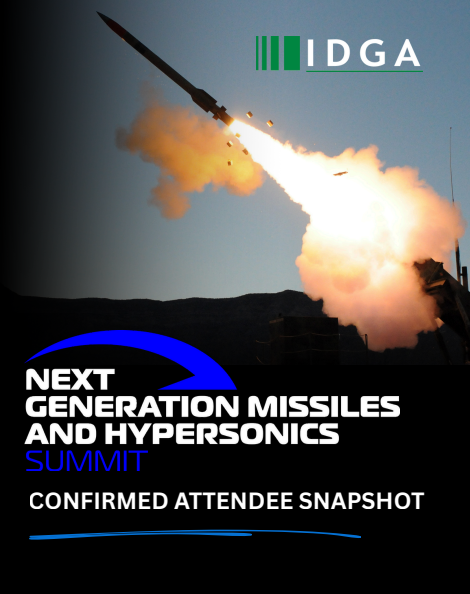
2025 Attendee Snapshot
Who Will You Meet? Check out our Attendee Snapshot to see the industry leaders and peers you’ll connect with at Next Generation Missiles and Hypersonics Summit.
Expert Insights
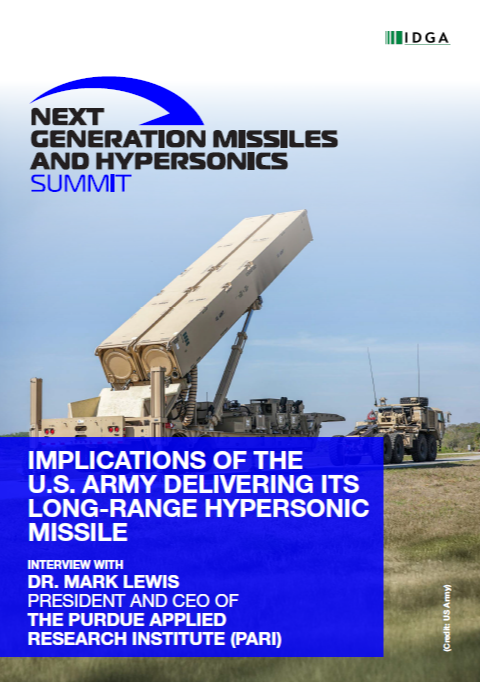
Implications of the U.S. Delivering its Long-Range Hypersonic Missile
The growth of the U.S. hypersonic industry has accelerated in the past decade as significant investments continue, notably in programs like Hypersonic Attack Cruise Missile , Army Long Range Hypersonic Weapon, and Navy Conventional Prompt Strike . While successful testing has brought hypersonic deployment closer for the United States, technological and operational challenges still exist in the space.
Dr. Mark Lewis, president and CEO of the Purdue Applied Research Institute (PARI), is well-versed in these challenges and the potential impact of hypersonics for the Defense Department. A renowned researcher, professor, and former deputy undersecretary of defense, Lewis brings a wealth of national security, scientific, and academic experience to IDGA as chairman for its Next Generation Missiles and Hypersonics Summit, taking place December 9-10 at the Sheraton Reston Hotel in Reston, Virginia.
Before the summit, IDGA sat down with Dr. Lewis to discuss the status of hypersonics and what he looks forward to as chairman of the Next Generation Missiles and Hypersonics Summit.
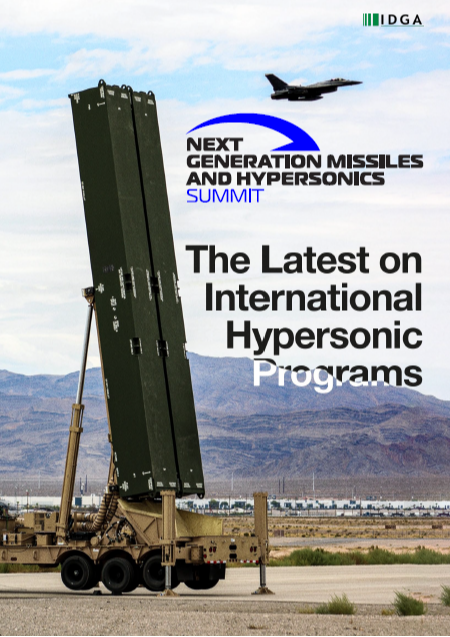
The Latest on International Hypersonics Programs
The global hypersonic missile industry was valued at US$6.8 billion in 2023, and is expected to grow to US$14.5 billion by 2030. In the latest report from IDGA, we will look at the largest (non-U.S.) players and programs in the hypersonics space to understand how their contribution will impact the expected growth of the hypersonic missile industry.
For the past three years, IDGA has published an update on key hypersonics programs for allies and adversaries alike. This year, our international hypersonics update returns, this time with details on China’s new air-to-air missile, joint programs between the U.S. and Australia, and much more.
If you are interested in learning more about the future of hypersonic weapons, register for IDGA’s Next Generation Missiles and Hypersonics Summit set to take place this December 9-10 in Reston, Virginia. The upcoming summit will not only feature presentations from U.S. DoD leaders and the American defense industry, but top-ranking officials from many of the allied nations featured in this report.
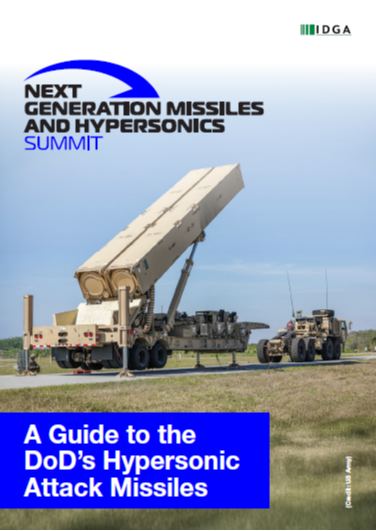
A Guide to the DoD's Hypersonic Attack Missiles
The U.S. Department of Defense has increased its focus on hypersonics in recent years, spending $6.9 billion for hypersonic research in FY2025, up from $4.7 billion in FY2023. In an era where maneuverability and stealth have become critical, hypersonic missiles have become a key form of artillery for the U.S. as it looks to remain a global defense leader
The DoD and its branches have several ongoing programs researching and developing hypersonic attack missiles. These include Conventional Prompt Strike (CPS) in the Navy, the Army’s Long-Range Hypersonic Weapon (LRHW), and the Air Force’s Hypersonic Attack Cruise Missile (HACM). This report will explain what sets each hypersonic attack missile apart, and provide an update on the latest information shared for each respective program.
IDGA’s Next Generation Missiles and Hypersonics Summit, taking place this December 9-10 in Reston, Virginia, will welcome personnel working on these three key hypersonic programs. The two-day summit won’t only focus on offensive hypersonic weapons; a large portion of the agenda will be dedicated to hypersonic missile defenses, including discussions on concepts for the Golden Dome.

What to Know About the Pentagon's Golden Dome
On January 27, the second Trump Administration began with the president signing a flurry of executive orders, including one directed towards U.S. missile defense systems.
The order, titled “The Iron Dome for America,” outlines a sweeping initiative to build a next-generation missile defense shield for the U.S. homeland, similar to Israel’s Iron Dome that has been operational since 2011. The U.S. Iron Dome, which as of May has been rebranded as the Golden Dome for America, is expected to cost $175 billion over approximately three years However, defense experts anticipate the project could cost upwards of $1 trillion in its entirety. This report will look at what we know about the Golden Dome so far, and expectations for the project for the remainder of the year and beyond.
IDGA’s Next Generation Missile and Hypersonics Summit provides an opportunity to connect with DoD decision makers about ongoing initiatives such as the Golden Dome, the Army’s Dark Eagle Long-Range Hypersonic Weapon (LRHW), and more. The two-day summit, taking place December 9-10 in Reston, Virginia, will bring together senior leaders from the U.S. military, industry, allied governments and academia to drive mission-aligned innovation and operational readiness. From acquisition roadmaps to test range modernization, university research collaboration to strategic deterrence policy, this year’s Summit offers a uniquely holistic look at where missile and hypersonic capability development is headed, and how the U.S. plans to engage in defending against the latest missile threats.

Key Developments in the Hypersonics Industry 2024
Hypersonic weapons development has surged in the past decade. According to Deloitte, the hypersonics industry is expected to grow to $5 billion in 2025. In the US programs like Hypersonic Attack Cruise Missile (HACM), Army Long Range Hypersonic Weapon (LRHW), and Navy Conventional Prompt Strike (CPS) show a significant investment in hypersonics. Similarly, both allies and near peer adversaries are engrained in programs of their own. In 2023, IDGA published a Hypersonic Systems report written by Dr. James Bosbotinis, a UK-based defense and international affairs analyst. The report was aimed at detailing key developments in select countries hypersonic investments. The following is an updated version of that report, with a look at the most recent data for each industry..

How Multi-Disciplinary High-Fidelity Models Bring More Accuracy to Hypersonics Research
While the pace of research and development in the hypersonics industry remains steady, the Center for National Security Initiatives at the University of Colorado, Boulder is taking steps to ensure the optimization of hypersonic systems thanks to their work with multi-disciplinary high-fidelity models.
Dr. Iain Boyd is the director of the center, and according to Dr. Boyd, high fidelity means putting in a lot of effort to create a super detailed model that gets as close to reality as possible. It's like the difference between using a rough sketch to design a car versus a super detailed blueprint that shows every nut and bolt. In hypersonics this level of detail ensures hypersonic vehicles have optimum performance, which is critical when these vehicles fly at extreme speeds and experience intense heat.

Hypersonic Weapons Summit - 2024 Attendee List
The 2024 Attendee List highlights the leading organizations within the industry and an extensive list of high-level attendees that will be attending this year.
The Hypersonic Weapons Summit will provided a platform for the DoD, academia, and industry to come together to learn, share knowledge and ideas, and collaborate on how to overcome common challenges.
Senior representatives from major programs including the US Air Force, Navy, Army, DARPA, and the Missile Defense Agency, alongside perspectives from Allied programs, provided a truly international outlook on hypersonic progress, challenges, and developments.
Industry Insights

[Interview] Breaking the Barrier: American Hypersonics | Colonel Ian Humphrey
The development of hypersonic weapons has shaken the military world. Among American leadership, murmurs of a Sputnik moment grow louder. Near-peer adversaries threaten to outpace the United States. Yet, in the face of unprecedented adversity, our armed forces have risen to the challenge. In 2023, American hypersonic weapons were fielded for the first time in history - and we spoke to Colonel Ian Humphrey, Project Manager for Long Range Hypersonic Weapon Integration in the Rapid Capabilities and Critical Technologies Office. In this exclusive interview, we uncover lessons learned, hard realities, and unparalleled opportunities in America's drive to modernize our strike capabilities for 21st-century conflict.

[Interview] Critical Technologies: Hypersonics | Dr Mark J. Lewis PHD, CEO, Purdue Applied Research Institute
Hypersonic technologies are becoming ever more critical as we prepare for a future where a near-peer conflict is becoming a real possibility. In this interview, Dr Mark J Lewis delivers a hard-hitting analysis of the state of hypersonics globally. He answers a range of questions, from their deployment of the War in Ukraine to responding to the uncertainty felt by Congress on the role the technology should play. Few experts can talk so freely and candidly on the topic making this piece a must-read for anyone interested in this evolving domain.

Commentary on Russian Hypersonics by RUSI's Justin Bronk
RUSI Senior Researcher Justin Bronk shares his views on Hypersonic use by the Russian Forces in Ukraine. His commentary:
- Puts the use of the technology into context beyond the immediate conflict,
- Gives insight onto how the Kinzhal works,
- Shares his thoughts on how the Kinzhal integrates into Russian doctrine thought,
Sponsorship enquiry
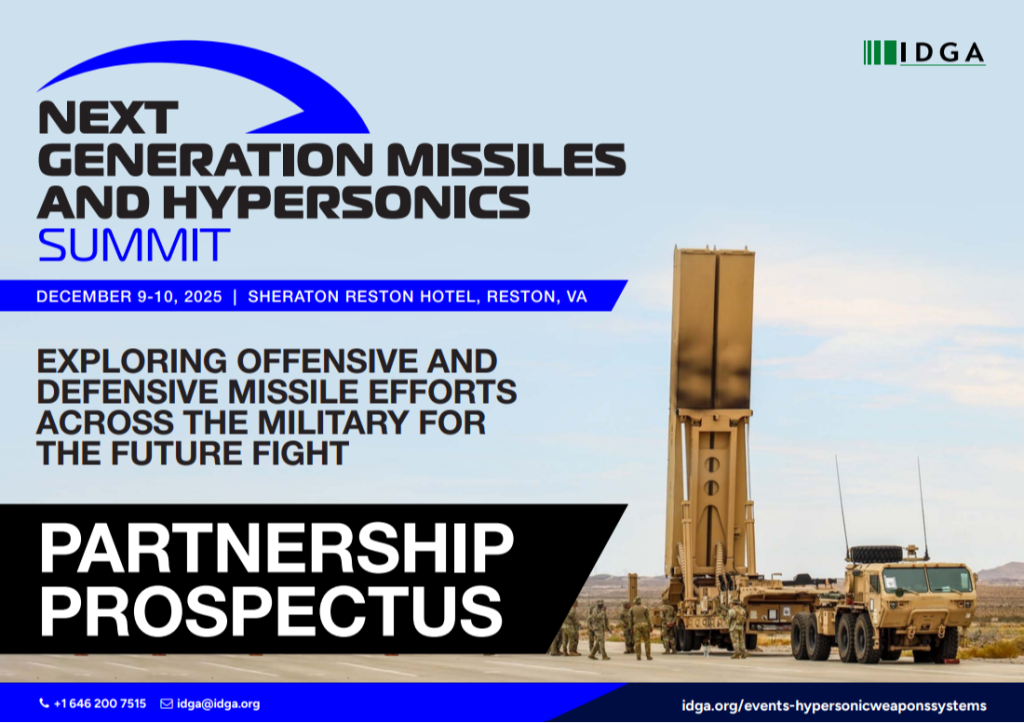
Next Generation Missiles and Hypersonics Summit - Sponsorship Prospectus
Download the Sponsorship Prospectus to see how you can leverage our platform and get your offering and expertise the exposure they deserve.
Details in the document include:
- Attendee Overview
- 2025 Early Confirmed Speakers
- Who you will meet/ Solutions in demand
- Event Themes
- Strategic Partner Opportunities
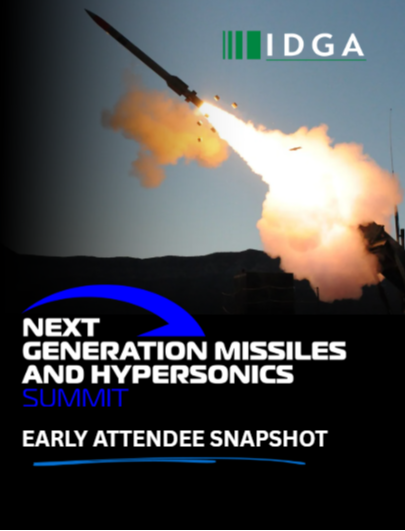
Next Generation Missiles and Hypersonics Summit - Early Attendee Snapshot
Connect with 200+ senior leaders from top organizations like Leidos, Nikon AM Synergy, DARPA, the Missile Defense Agency, Space Defense Agency, U.S. Army, Air Force, and Navy.
Download the attendee snapshot to see the early confirmed companies and job titles that you can see.
Speaker Presentations

Overview of Hypersonic Program Efforts Across The DoD by Dr James Webber
The "Overview of Hypersonic Program Efforts Across The DoD" presentation was delivered at the 2023 Summit by Dr James Webber, Principal Director, Hypersonic Office, Office of The Under Secretary of Defense for Research and Engineering (OUSD (R&E)).

Speaker Presentation - SDA’s Tracking Layer Exploration of Technical Areas
The "Overview of Hypersonic Program Efforts Across The
DoD" presentation was delivered at the 2023 Summit by Colonel Alexander
Rasmussen, Chief, Tracking Layer, Space Development Agency, US Space Force and
covers:
- The Proliferated Warfighter Space Architecture
- Space Vehicles Acquisition Approach
- Delivering Capability at An Affordable Cost
- The Road to Tranche 0 Launch 1
- Maturing Technology – Advancing Capability
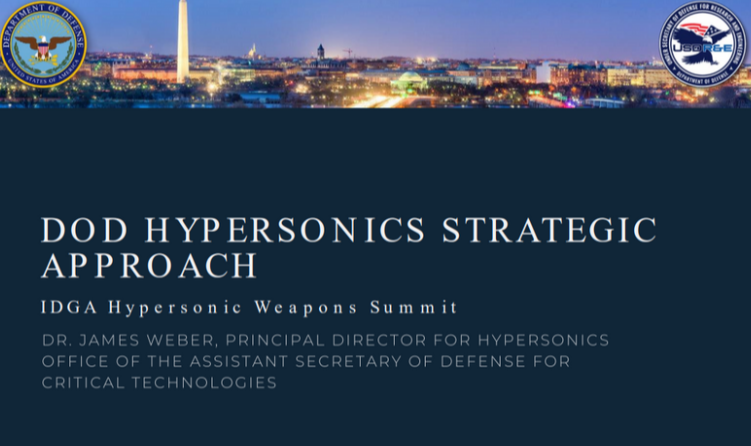
Presentation: Department of Defense’s Hypersonic Strategic Approach
We’re excited to share a presentation by Dr. James Weber, Ph.D., Principal Director for Hypersonics at the Office of the Under Secretary of Defense for Research and Engineering (OUSD(R&E)), delivered at the Next Generation Missiles and Hypersonics Summit 2024.

Past Presentation - Conventional Prompt Strike Update
The “Conventional
Prompt Strike Update” presentation was delivered at the 2022 Hypersonic Weapons
Summit by Captain Gregory Zettler, Program Manager, Conventional Prompt Strike,
US Navy Strategic Systems Programs and covers:
- CPS Mission
- CPS Overview: Same Missile –All Platforms
- Developmental Flight Test Overview
- Transition to Industry
- Industrial Base
- Path to ZUMWALT
- Program Milestones

Past Presentation - Hypersonic Weapons: The Way Forward
The "Hypersonic Weapons: The Way Forward" presentation was delivered at the 2022 Hypersonic Weapons Summit by Dr. Mark J. Lewis, Executive Director, NDIA Emerging Technologies Institute who delves into the following topics:
- Results of Various Analyses
- Where Should We Be Heading
- U.S. Test Infrastructure
- The Gold Standard
- High Mach Vehicle Design Challenges
- Significant Progress Made
- Where Do We Go From Here



